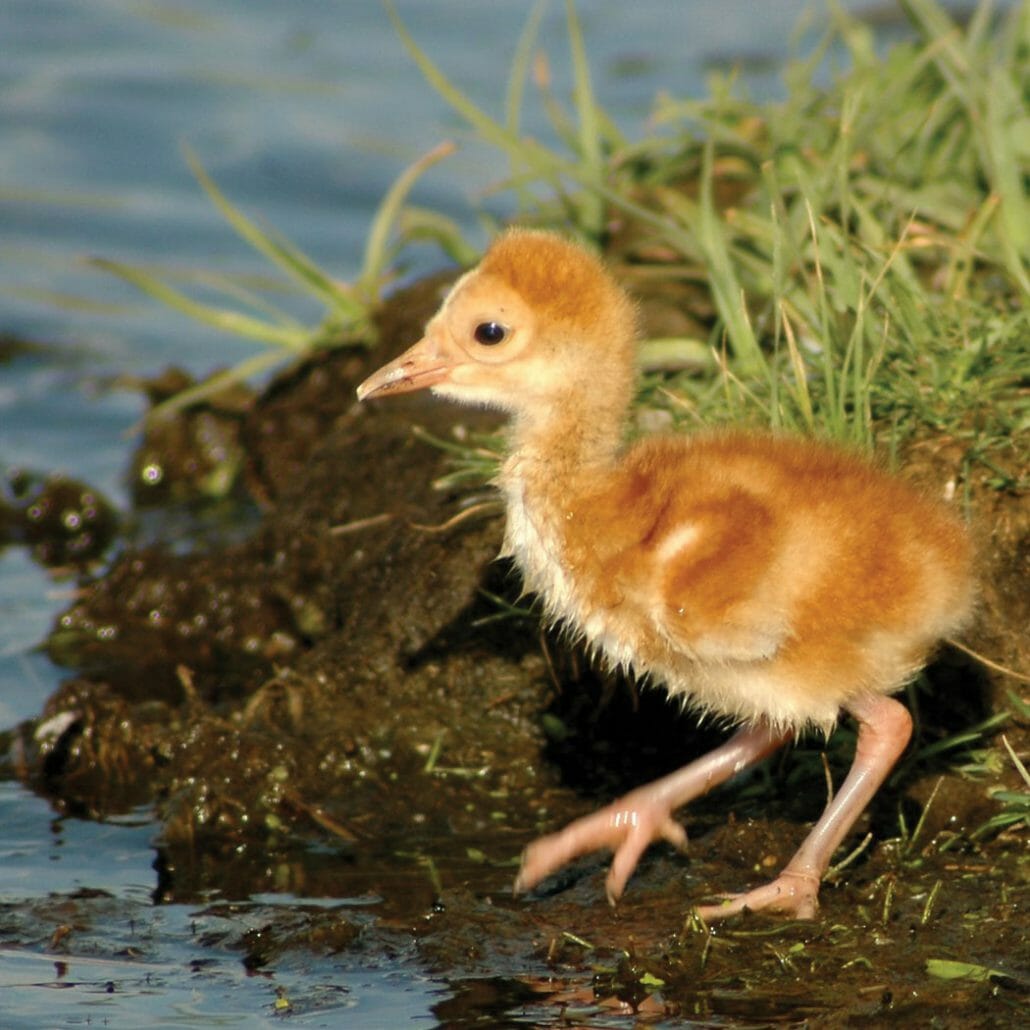
The Sound of Preservation
A haven for flora and fauna
Summer 2020
Written By: Natalie Taylor | Images: Courtesy Michael Flaherty and Rick Braveheart
You’re walking along a trail at Swaner Preserve and EcoCenter, feeling tranquil and at one with nature. Suddenly, you hear something that sounds prehistoric, something that makes you feel like you’re on the set of Jurassic Park.
It’s the call of a sandhill crane. “They sound like what I imagine pterodactyls might have sounded like,” says RheaCone, conservation coordinator at Swaner. “They’re very loud. Full-grown adults are about 4 or 5 feet tall, so you can hear them from far away.”
Sandhill crane babies hatch in the spring and the families stay through summer. A webcam remains focused on a nest near the Swaner building. “A pair of cranes has been using the nest for years,” says Hunter Klingensmith, visitor experience coordinator at Swaner. “You can watch the nest being built, the parents changing guard, and the eggs hatching.”
In addition to cranes, the preserve sees pelicans, small songbirds, warblers, and more, especially in spring and fall when birds use it as a stopover
during their migration. “Red-winged blackbirds have very distinct calls,” says Rhea. “Hearing their calls when they return in early March is one of the first signs of spring for me.”
The preserve boasts a healthy ecosystem that attracts coyotes, rabbits, weasels, deer, elk, snakes, and a variety of insects. The wetland part of the
preserve is closed to the unguided public in order to protect the flora and fauna that call it home. “Animals can come and go,” says Rhea. “We try to provide the best habitat possible for the animals that choose to make their home here.” Dawn and dusk are the best times to observe the abundant wildlife, although much can be seen and heard throughout the day.



Of the preserve’s 1,200 acres, 350 acres are upland habitat on the north side of I-80. To the south of I-80 are 850 acres of wetlands with 10 miles of trails, a 4-story tower viewpoint, and a variety of public programs, including educational field trips, traveling exhibits, workshops, and volunteer restoration opportunities.
There is a huge difference between the north and south parts of the preserve, and protecting the different types of habitat and the biodiversity of the area is one of Swaner’s top priorities.
“Only 1 percent of Utah has wetland area, and of that, 75 percent is the Great Salt Lake habitat. So only .25 percent of Utah is made of wetland
outside of the Great Salt Lake,” says Hunter, noting that “more than 80 percent of animals will use wetlands at some point in their life.”
Wetlands act as flood control and their plants help to remove pollution from the water and soil, which is crucial for clean water.
“Although this area is protected in perpetuity, in order to keep it in its most beneficial state, restoration is an ongoing, necessary project,” Hunter explains. “We’re surrounded by so much development and challenges such as water quality, invasive species, and the effects from the past use of the land. We’re always working to keep it at its best wetland state.”

